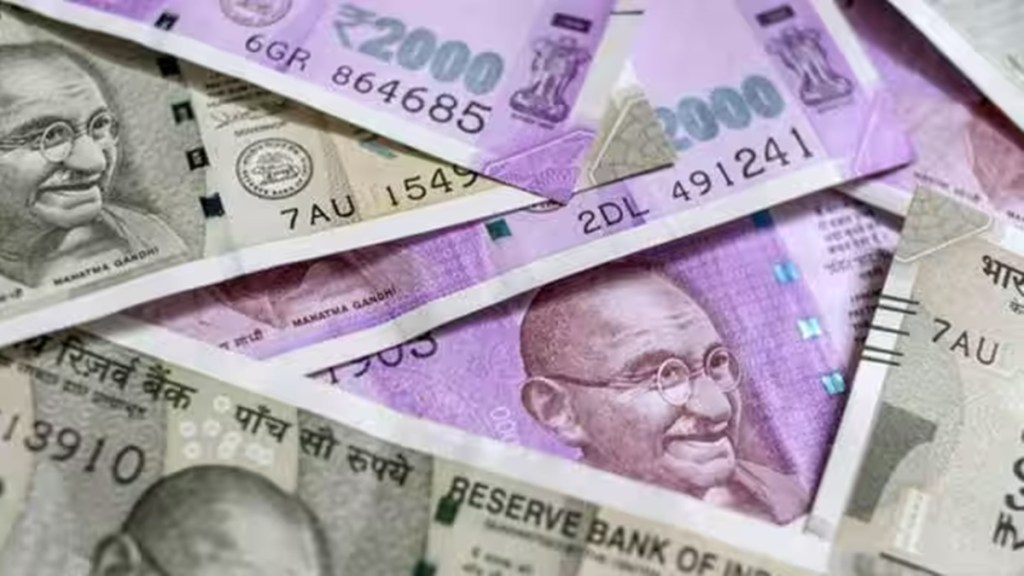By Sandeep Vempati
De-dollarisation has been in the news since many years but it has gained, although warranted, disproportionate focus amidst the recent global economic crises. The reason is the weaponisation of the dollar, a consequence of the US government’s decision to freeze Russia’s dollar assets due to war in Ukraine.
The US never used its position of strength, resulting from the fully fiat greenback as the dominant global reserve currency, responsibly to further global economic transactions, nor did it manage its economy effectively as there were bouts of inflationary and recessionary periods which led to negative spillovers to global economies due to globalisation. Second, monetary policy globally is tightly linked to the greenback. Per the IMF, the share of the dollar in official foreign exchange reserves fell sharply from 84.85% in 1970 (a year before fully fiat greenback as global reserve currency) to 58.36% in 2022, which is highly disproportional to its share in global GDP.
According to the National Bureau of Economic Research, the euro could not dislodge the dollar or emerge an alternative because of inadequate supply of high-quality euro-denominated assets that international investors and central banks could use as a store of value. Between 2000-2022, the euro’s share in foreign exchange reserves increased by a little over 2%.
The Chinese yuan, although picking up its share in foreign exchange reserves, is a managed currency allowed to float in a certain bandwidth, and hence its value has not been discovered by market forces. Also, transparency of its economy remains a million-dollar question. The Japanese yen, sterling pound, and the Australian or Canadian dollar have limited scope, as the potential of these respective countries in GDP growth or exports is limited. Globally, there is a need felt for an additional reserve currency in the prevailing multiple reserve currencies basket.
The Indian rupee is positioned to be the one when measured against the performance and potential of economy, exports, and exchange rate and also price stability. In the last nine years, the Indian economy has seen a major transformation. Its rank among global economies has improved from 10 to 5, which has to be contrasted with the fragile five in 2013. It has been the fastest growing among large economies consecutively for last two fiscals and is on the course for a third time. Also, India is soon set to become world’s third largest economy and will reach a GDP size of $5 trillion.
The merits do not end there. In the five out of 10 years between 2013-2022, India had the highest FDI inflow as a percentage of GDP as compared to the US, China, Japan, and Germany. Further, India is projected to attain a GDP size of $26 trillion in 2047 per Ernst & Young. Goldman Sachs projects India to become the world’s second largest economy by 2075.
India is aware that its global standing in exports is not aligned to its global economic rank but its exports are progressing as its share in global exports increased from 1.92% to 2.24% in the 10 years between 2012-2021. It is aiming for $2 trillion worth of exports by 2030 and projected exports would be $6.5 trillion by 2047, per its peak exports to GDP ratio.
India has clarified its position on exchange rate management on multiple occasions—it intervenes in the forex market to curb excess volatility only, not to target any specific price level. The rupee has exhibited resilience and strength and performed on par with other global reserve currencies like the euro, pound, and yen, while navigating the Covid-19, commodity, and currency crises. While the yen depreciated, the rupee, pound, and euro appreciated between the start of FY21 and the Ukraine war. Since its outbreak, the yen depreciated by 23% while the rupee and pound depreciated by 9.5%. The euro too depreciated by 5.5%.
The lesser highlighted and hugely successful aspect about India is its flexible inflation targeting framework that leverages price stability. During the recent three black swan events, India has managed inflation much better compared to western countries, which witnessed multidecadal high inflation levels. The recent Governor of the Year award to the RBI Governor is a testimony to India’s success in managing inflation.
Apart from establishing confidence in the rupee through the performance and potential of its economy and price stability, India also initiated certain steps to raise the visibility of the rupee globally. Following RBI’s decision to allow settlement of international trade in rupees, India has initiated a local currency settlement system with Malaysia and UAE to settle trade in the respective local currencies while eliminating the need for any third currency. Currently, 22 countries are discussing with India about the possibility of bilateral trade in rupee.
Also, India’s UPI is linked to fast payment systems of multiple countries to enable cross-border remittances. Recently, India’s stature was raised on the global economic map as its government bonds will be included in JP Morgan’s Global Bond Index and soon, other agencies too are likely to follow suit. Inclusion in a global bond index would exert pressure on the government to adhere to fiscal discipline and ensure that its bonds maintain investment grade character and keep international investors tied.
India is aware of partial convertibility on the capital account but the journey to full convertibility will be a process, not an event. India, under the leadership of prime minister Narendra Modi, has initiated the right steps at an appropriate time and will initiate more in the immediate future. The recognition of the rupee as a currency among the global multiple reserve currencies basket can take a while.
The writer is Economist and columnist,
Bharatiya Janata Party


